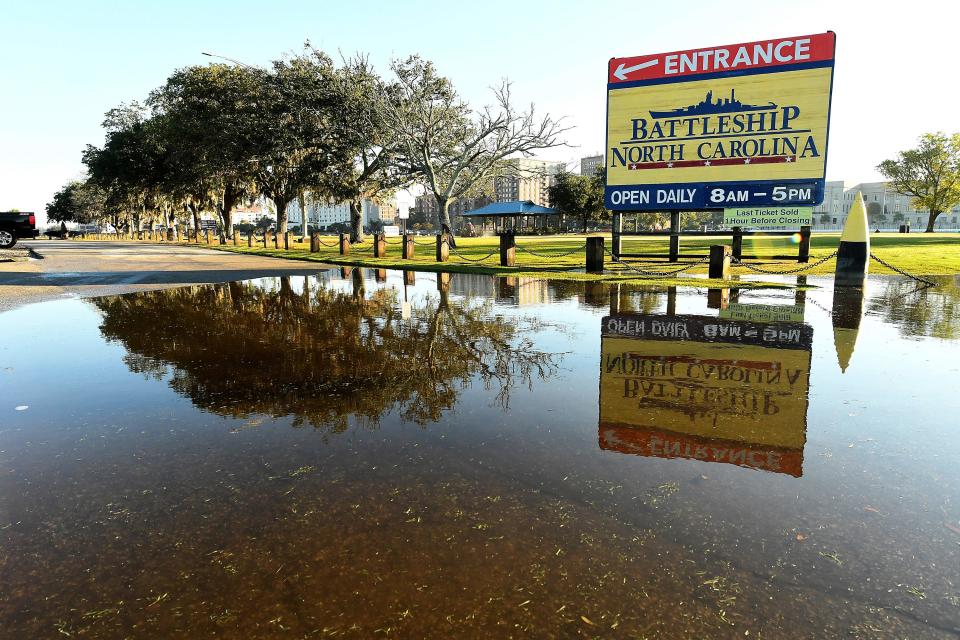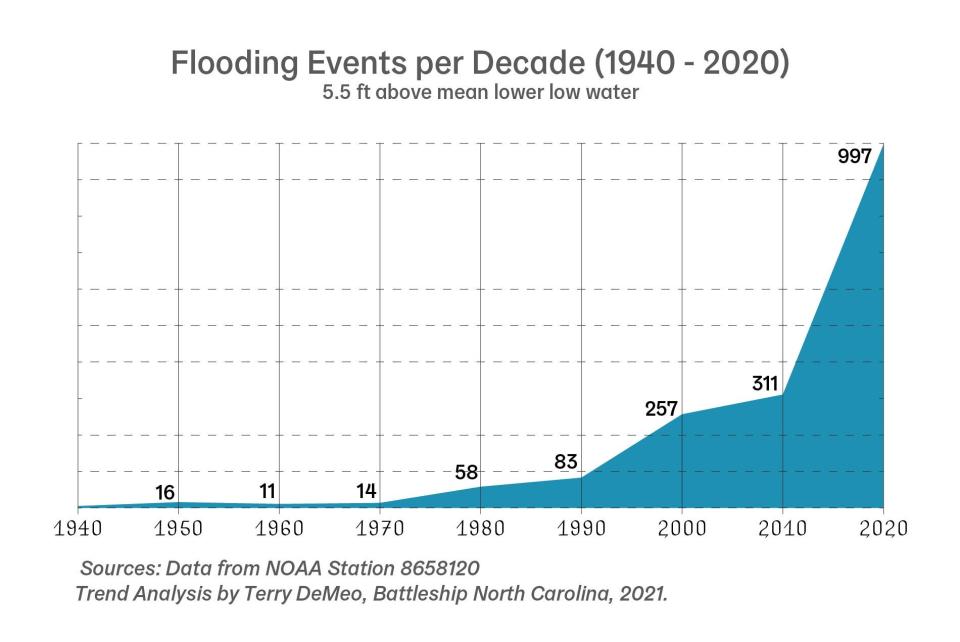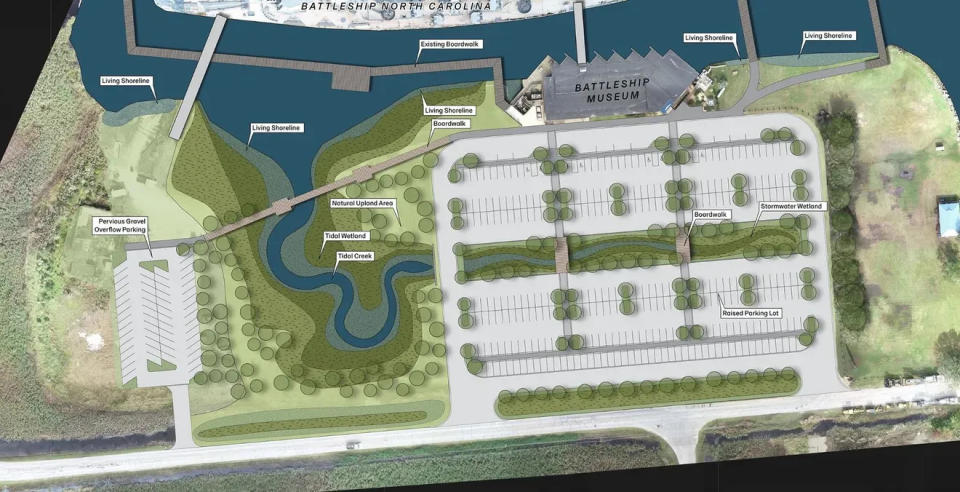Why the Battleship North Carolina is turning part of its parking lot into wetlands, tidal creek
Commissioned in 1941, the Battleship North Carolina isn't a young lady.
That means there's usually some type of construction or maintenance work going on or around the 35,000-ton vessel moored at Eagles Island across from downtown Wilmington.
But these days visitors might notice a bit more activity than normal.
Officials this month kicked off the state memorial's ambitious $4.5-million "Living with Water" project that aims to use natural methods and techniques to allow the battleship to adapt to its changing environment being fueled by climate change.
Rather than trying to engineer ways to control the flooding that often leaves the ship marooned amid the wetlands and seas of phragmites on low-lying Eagles Island, officials hope to learn to live with nature by molding its surroundings to the new reality.

What's the issue with flooding?
Last decade as the tidal flooding at Eagles Island grew worse, the battleship commissioned a study to see what was going on.
The study showed a more than 7,000% increase in tidal flooding between 1961, when the historic naval ship came to Wilmington, and 2020. Between just 2011 and 2020, there was an eyewatering 770% increase in flooding events − a figure that's likely increased since then as researchers document sea-level rise increasing.
For the battleship, a wet parking lot or standing water on U.S.S. North Carolina Road, which links the battleship to U.S. 421, isn't just an inconvenience. By law, the historic site isn't supported by state taxpayers for its operational costs. So if visitors can't access the battleship, they aren't buying tickets or books and swag from the gift shop, and that will seriously and quickly hit the site's bottom line.
PHOTOS: Flooding around the Battleship North Carolina

Enter 'Living with Water'
The new project aims to use a mix of approaches to mitigate most of the flooding.
A large part of the "Living with Water" work will deal with the battleship's problematic parking lot, which is often flood prone at even normal high tides. Crews plan to remove about 2 acres of the parking lot on the western side and restore the area to wetlands divided by a tidal creek. That should help capture and absorb high tides, while the tidal creek will direct water back to the Cape Fear River.
The rest of the battleship's parking lot will be raised above the high-tide mark, and "green" stormwater measures, including lots of new tree and native marsh plants, will be constructed to treat runoff before it reaches the river and adjacent wetlands.
The project also will include the transformation of nearly 800 feet of eroding shoreline on either side of the visitors center to a living shoreline, where natural features like sea grasses, oyster reefs and rock sills are used to help buffer areas from waves and storm action and create habitat for a host of marine critters.
As part of the project the battleship is partnering with NOAA's National Center for Coastal Ocean Science to help with plant selection and monitoring efforts, and intends to team up with the University of North Carolina Wilmington's Benthic Ecology Lab for permit-required biological monitoring.
STUCK IN THE MUCK: Will Wilmington's west bank ever be developed?

What happens now?
The project is expected to take about eight months, and officials have said it will be done in phases to keep visitor access to the battleship open and inconveniences down to a minimum.
A bigger question, though, is what happens around the battleship with future developments, including proposals to develop the river's west banks and the State Port's desire to deepen the Cape Fear River Shipping Channel, and potential impacts from climate change. Numerous studies forecast sea-level rise to increase in the coming decades as the planet continue to warm, and the Carolina coast already has some of the highest rates of rising seas in the country.
"“We’re hoping to be ahead of the curve for a number of years," said Capt. Terry Bragg, the battleship's executive director, last fall. "But I don’t think this is the final answer."
The "Living with Water" project is funded through a $1 million state appropriation and several federal and state grants.
Reporter Gareth McGrath can be reached at GMcGrath@Gannett.com or @GarethMcGrathSN on X/Twitter. This story was produced with financial support from the Green South Foundation and the Prentice Foundation. The USA TODAY Network maintains full editorial control of the work.
This article originally appeared on Wilmington StarNews: Battleship North Carolina's Living with Water focuses on flooding solutions

